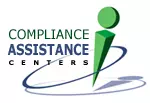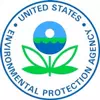Heating, Ventilation, and Air Conditioning (HVAC) Systems
The major compliance concern associated with HVAC systems involves refrigerant fluids. The types of fluids used in older systems, chlorofluorocarbons, or CFCs, belong to a class of chemicals called ozone depleting substances (ODSs).
Although CFCs are safe if handled properly, and are non-toxic, they have a deadly side-effect. When released into the atmosphere, these highly stable compounds slowly diffuse up to the stratosphere, where they are broken down by ultraviolet light (UV) from the sun. Each molecule of gas breaks down into forms of chlorine and other compounds, and starts a chain reaction during which many molecules of ozone are destroyed. A little CFC goes a long way in ozone destruction.
Ozone is a form of oxygen that is produced by reactions involving other molecules and ultraviolet light. This reaction can occur throughout the atmosphere. When it happens at ground level, it is a problem for us -- ozone attacks the lungs. But in the stratosphere, where ultraviolet light is more intense, the formation of ozone is beneficial to us. Ozone absorbs the ultraviolet sunlight before it reaches the earth's surface. If the ozone is depleted, our eyes and skin experience a higher level of this high-energy light, causing conditions such as cataracts, as well as skin damage that sometimes leads to cancer. Many other living species in the environment are also damaged by high UV levels.
Compliance Requirements
Healthcare facilities are required to prevent further damage to the earth’s protective stratospheric ozone layer by preventing releases of ODSs from their HVAC systems. These releases can occur during normal operation if the system is not properly checked and maintained. They can also occur during servicing.
Normal operation
The best way to ensure that an HVAC system minimizes its releases of ODSs during normal operation is to use refrigerants that have an inherently low ozone depleting potential. The production of CFCs was phased out by 1996. But CFCs continue to be used in pre-existing systems.
Some facilities have replaced the CFCs in their systems with a compromise alternative refrigerant type, called hydrochlorofluorocarbons (HCFCs). They are less stable than CFCs, and are more likely to break down before they reach the stratosphere, and are thus weaker as ODSs than CFCs. But they still damage the ozone layer. New production and import of most HCFCs were phased out as of 2020. The most common HCFC in use today is HCFC-22 or R-22, a refrigerant still used in existing air conditioners and refrigeration equipment.
Please note that HCFCs, like all refrigerants, can be toxic if exposure levels exceed recommended practices. For all chemicals, users should follow the precautions set forth in Material Safety Data Sheets provided by the chemical manufacturer, as well as other safety practices and standards such as ASHRAE Standard 15 (this standard is available for purchase from ASHRAE).
Alternatives that are both CFC- and HCFC-free are now available. To ensure future compliance, a facility should either verify that all refrigeration and air conditioning equipment already runs on CFC free and HCFC free gas, or should begin the conversion process now.
Servicing
Servicing should be performed by certified technicians only. Facilities may want to verify that HVAC contractors employ technicians certified by NATE (North American Technician Excellence), the leading industry-supported testing and certification program.
EPA provides an information page on technical certification programs.
The following professional organizations may be able to provide additional information:
- American Society of Heating, Refrigerating and Air-Conditioning Engineers
- Refrigeration Service Engineers Society
Regulations require that HCFCs and CFCs in discarded equipment are properly captured to avoid release into the environment. (This also applies to alternative fluids such as HFCs.) EPA provides an information page listing EPA-certified refrigerant reclaimers.
Pollution prevention opportunities
HVAC units should be converted to use alternative refrigerants that are both CFC- and HCFC-free.
HVAC units should be properly sized, and should be selected for high efficiency. More information is available from the Energy Star healthcare index page.
Refrigerant Recycling Rule
The purpose of section 608 of the Clean Air Act (CAA) is to minimize the quantity of refrigerants released to the atmosphere, and to maximize the recovery and recycling of refrigerants during the servicing and disposal of stationary air conditioning and refrigeration equipment. Requirements include technician certification, mandatory use of recovery and recycling equipment, and service practices that minimize refrigerant emissions. prohibition of venting, service requirements, equipment certification, leak repair, proper disposal, and recordkeeping. More information can be found at http://www.epa.gov/ozone/title6/608.
Cooling towers
Cooling towers, which can be part of cooling and refrigeration systems, must not use hexavalent chromium water treatment chemicals. The use of hexavalent chromium in comfort cooling towers was banned under a 1990 rule under the Toxic Substances Control Act.
More resources
The Stratospheric Ozone Information Hotline, at 800-296-1996, or the Ozone Depletion web site (www.epa.gov/ozone), provides general information about regulations promulgated under Title VI of the CAA.
The Energy Star healthcare index page provides links to energy conservation information selected for relevance to the healthcare sector.
EPA provides an information page with links for businesses that use ozone depleting substances.




